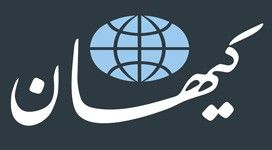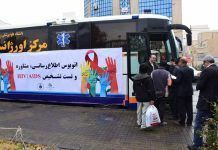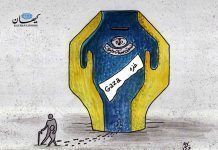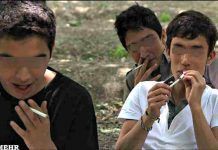January 12, 2017
The forthcoming change in the White House and possible hardening of the U.S. stand vis-a-vis Iran have prompted intense debate among the anxious ruling elite in the Islamic republic. The Tehran regime has inextricably linked interests in oil exports, the Syrian conflict, and regional power rivalries.
One of the fiercest internecine clashes has been that of the reformist President Hassan Rouhani, whose short-term goal is to win a second term in office in May 2017 elections, and the head of Iran’s Judiciary, Sadeq Ardeshir Larijani (a.k.a Amoli-Larijani), a hardliner who is hell-bent on dashing Rouhani’s hopes of getting re-elected.

Both men aim to reshape the political landscape of Iran. Rouhani portrays himself as a progressive cleric who is most qualified to move post-revolutionary Iran forward by improving relations with neighbouring countries and bringing Iran back into the international fold, while attempting to secure a place for himself in post-Khamenei Iran. Larijani’s singular ambition, however, is to replace the Supreme Leader when the opportunity presents itself.
Rouhani’s re-election will definitely weaken the position of hardliners, possibly derailing Larijani’s hope of playing a major role in Iran’s future. Larijani and his supporters who are counting on Khamenei’s implicit blessing, have launched a frontal attack on Rouhani by accusing his government of being ineffective and corrupt.
President Rouhani, for his part, has given opponents plenty of ammunition. His brother, Hossein Fereydoun, who reportedly wields great power in the current government, has been accused of influence peddling and accepting bribes from Babak Zanjani, the Iranian billionaire convicted and sentenced to death for embezzlement by the Islamic regime. Zanjani is the troubling link where Rouhani and his opponents collide. He was blacklisted by the U.S. and E.U. for helping Iran circumvent oil sanctions. He has been linked to every layer of the Iranian regime, including the Government, the Islamic Revolutionary Guard Corps (IRGC), Majlis deputies, judges, and the Supreme Leader, Seyyed Ali Khamenei.
One hallmark of the Islamic regime is its propensity to allow the formation of independent and somewhat autonomous power centres inside the ruling structure. For instance, the IRGC and its sub-divisions of Basij and Qods Force, were created to both complement and counterbalance the regular army. The IRGC also has a separate intelligence unit that operates independently from the Ministry of Intelligence. The unit has extra-judicial powers and the authority to detain, interrogate, and even torture citizens.
The Judiciary also enjoys a great degree of autonomy with its own dedicated police force that routinely and arbitrarily targets those it deems as threat to the regime, Islamic sanctities, or the Supreme Leader.
Although infighting among various factions within the Islamic republic is not a new phenomenon, the recent wave of partisan disputes betrays a deep- seated insecurity within a regime that has failed to tackle the country’s economic issues and successfully manage its foreign relations. Its palpable agitation has been compounded by the daunting prospect of having to deal with a Trump administration in a few weeks.








